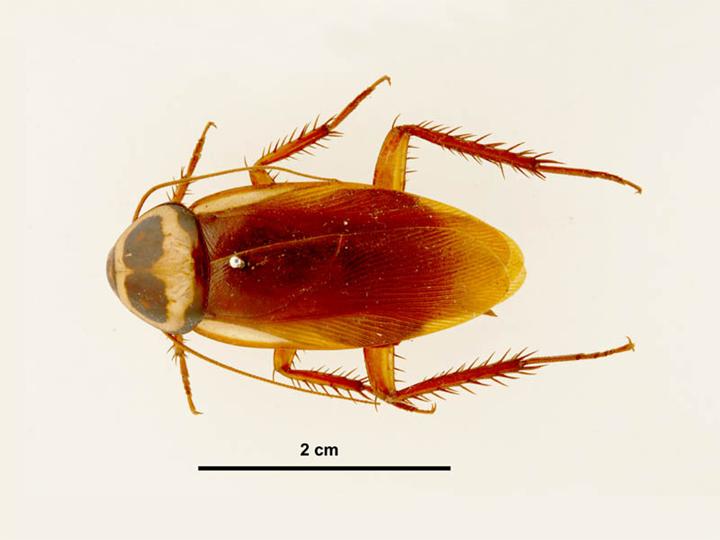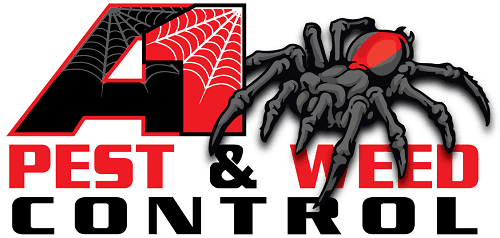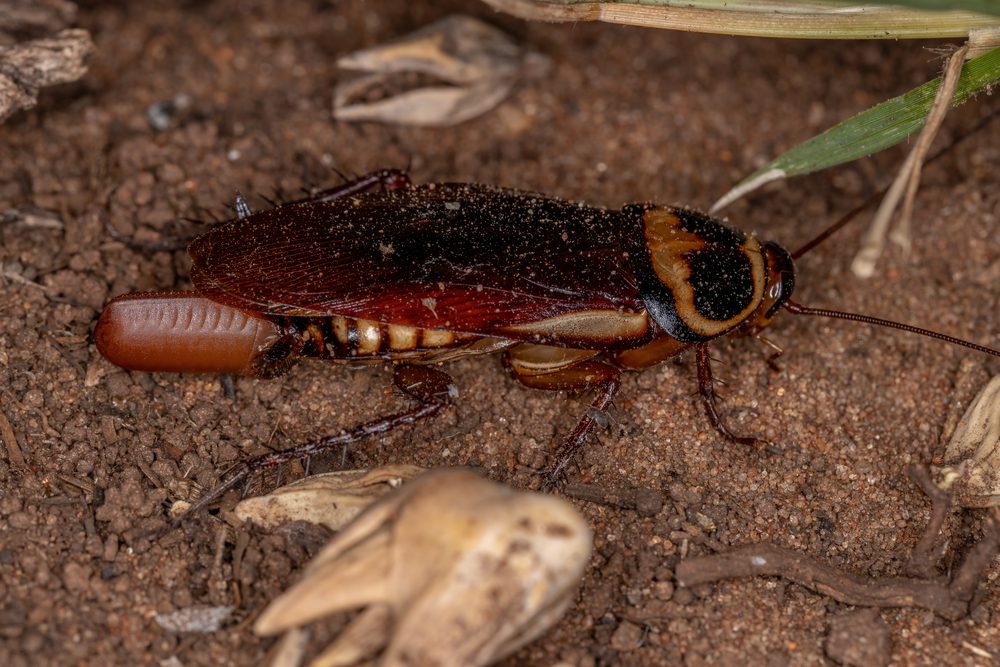Australian Cockroaches – Pest Knowledge Base
Introduction to the Australian Cockroach: Basic Anatomy and Characteristics
The Australian cockroach is a type of insect that belongs to the family of Blattidae. It is native to Australia but can now be found in many parts of the world, including the United States, where it is considered an invasive species.
The Australian cockroach has a distinct appearance, with a reddish-brown or dark-brown body that is about one and a half inches long. It has long, thin antennae and wings that allow it to fly short distances. The wings of the male Australian cockroach are longer than those of the female, which makes it easier for them to fly.
One of the most notable characteristics of the Australian cockroach is its ability to tolerate hot and dry conditions. It is often found in areas with high temperatures and low humidity, such as in attics, crawl spaces, and basements.
- Classification: The Australian Cockroach is classified as an insect, which is a type of invertebrate animal.
- Scientific species name: The scientific species name for the Australian Cockroach is Periplaneta australasiae.
- Genus: The Australian Cockroach belongs to the genus Periplaneta.
- Class: The Australian Cockroach belongs to the class Insecta, which includes all insects.
- Family: The Australian Cockroach belongs to the family Blattidae.
- Order: The Australian Cockroach belongs to the order Blattodea, which includes cockroaches.
- Subphylum: The Australian Cockroach belongs to the subphylum Hexapoda, which includes insects with six legs.
- Phylum: The Australian Cockroach belongs to the phylum Arthropoda, which includes animals with jointed limbs and an exoskeleton.
- Kingdom: The Australian Cockroach belongs to the kingdom Animalia, which includes all animals.
10 Australian Cockroach Facts
- Australian cockroaches are native to Australia and are found throughout much of the country, including in the tropical and subtropical regions.
- They are also found in many other parts of the world, including the United States, where they were likely introduced through international trade and travel.
- Australian cockroaches are medium-sized insects that are reddish-brown in colour and have wings that allow them to fly.
- They are attracted to sources of food and water and are often found in warm, humid indoor and outdoor environments.
- Australian cockroaches can pose a risk to human health, as they can carry diseases and trigger allergies. They can also damage buildings and their contents.
- Australian cockroaches reproduce through a process called parthenogenesis, which means that the female can produce eggs without fertilization by a male.
- A female Australian cockroach can produce up to 20 egg capsules, or oothecae, in her lifetime, with each ootheca containing up to 24 eggs.
- The life cycle of the Australian cockroach, from egg to adult, can take anywhere from three months to a year or more, depending on the environmental conditions.
- Australian cockroaches are highly adaptable and can thrive in various environments, making them difficult to control.
- To prevent and control infestations of Australian cockroaches, it is important to take preventive measures such as sealing cracks and crevices and eliminating sources of food and water, as well as to use home remedies or professional pest control methods as needed.
The History of the Australian Cockroach: Origins and Spread
The Australian cockroach, also known as the Periplaneta australasiae, is native to Australia and is found throughout much of the country, including in the tropical and subtropical regions. However, it is now found in many other parts of the world, including the United States, where it was likely introduced through international trade and travel.
It is thought that the Australian cockroach was introduced to the United States in the 1600s, possibly through the importation of goods from Australia. Since then, it has spread to many parts of the country and has become established in a number of states, including Florida, Georgia, and Texas.
The Australian cockroach is considered an invasive species in the United States, as it can outcompete native insects for resources and may negatively impact the ecosystem. It is also a nuisance to humans, as it can carry diseases and trigger allergies.
To prevent the spread of the Australian cockroach and to protect human health and the environment, it is important to take steps to prevent and manage infestations. This may involve using prevention measures, such as sealing cracks and crevices and eliminating sources of food and water, as well as using home remedies or professional pest control methods to control and eliminate infestations.
The Habitats of Australian Cockroaches: Where They Are Found
Australian cockroaches are commonly found in warm, humid environments, such as in tropical and subtropical regions. They are often found in homes, offices, and other buildings and in outdoor areas such as gardens and wooded areas.
Australian cockroaches are often found inside buildings in dark, damp places, such as basements, crawl spaces, and attics. They are also attracted to areas where there is a source of food and water, such as kitchens and bathrooms.
Outdoor habitats for Australian cockroaches include wooded areas, gardens, and other areas with organic matter, such as compost piles. They are also attracted to areas with high humidity, such as near bodies of water.
The Dangers of Australian Cockroaches: Health Risks and Allergies
Australian cockroaches can pose a number of dangers to humans, including health risks and allergies. One of the main health risks associated with Australian cockroaches is disease transmission. These insects can carry a variety of diseases, including salmonella and other foodborne illnesses, which can be transmitted to humans through contact with their feces or the surfaces they crawl on.
Australian cockroaches can also cause allergies in some people. The proteins found in their shed skin and feces can trigger allergic reactions in sensitive individuals, including asthma attacks and other respiratory issues.
Australian Cockroach Reproduction
Like other cockroach species, Australian cockroaches reproduce through a process called parthenogenesis, which means that the female can produce eggs without fertilization by a male. A female Australian cockroach can produce up to 20 egg capsules, or oothecae, in her lifetime, with each ootheca containing up to 24 eggs.
The eggs within the ootheca are protected by a hard, leathery casing and can take anywhere from one to three months to hatch, depending on the temperature and humidity conditions. After hatching, the young cockroaches, called nymphs, will undergo moults as they grow and develop into adults.
The entire life cycle of the Australian cockroach, from egg to adult, can take anywhere from three months to a year or more, depending on the environmental conditions. The life cycle may be shorter in warm, humid environments, while in cooler, drier environments, it may take longer for the cockroaches to reach maturity.
It’s important to note that Australian cockroaches are highly adaptable and can thrive in various environments, making them difficult to control. To prevent and manage infestations, it is important to take preventive measures such as sealing cracks and crevices and eliminating sources of food and water, as well as to use home remedies or professional pest control methods as needed.

The Life Cycle of Australian Cockroaches: From Egg to Adult
The life cycle of the Australian cockroach begins when the female lays eggs in an egg capsule called an ootheca. The ootheca is typically about the size of a grain of rice and is light yellow in colour. The female Australian cockroach can lay up to 20 oothecae during her lifetime, each containing up to 20 eggs.
After the eggs are laid, they hatch into nymphs, which are small, wingless versions of the adult Australian cockroach. The nymphs go through several stages of development, shedding their exoskeletons and growing larger as they mature.
It takes about a year for an Australian cockroach to reach adulthood. Once they become adults, they can live for up to one and a half years.
How to Prevent an Australian Cockroach Infestation: Tips and Tricks
There are a number of steps you can take to prevent an Australian cockroach infestation in your home or business. Some of the most effective prevention methods include:
- Sealing cracks and crevices: Australian cockroaches can enter buildings through small openings, so it’s important to seal any cracks or crevices around the exterior of your home or business.
- Eliminating sources of food and water: Australian cockroaches are attracted to food and water sources, so it’s important to keep your home or business clean and free of crumbs or spills. Make sure to store food in airtight containers and regularly clean under appliances and in other areas where food particles may accumulate.
- Removing clutter: Australian cockroaches often hide in cluttered areas, so keeping your home or business free of clutter is important. This includes items like boxes, paper, and other materials that could provide a hiding place for the insects.
- Using bait stations: Bait stations can be effective at controlling Australian cockroach populations. These stations contain bait that the cockroaches are attracted to, which they will consume and then die. It’s important to place the bait stations in areas where the cockroaches are likely to be found, such as near food or water sources.
- Using natural repellents: There are a number of natural substances that can repel Australian cockroaches, including essential oils like peppermint and eucalyptus. You can use these oils to create a natural repellent spray or add them to cotton balls and place them in areas where the cockroaches are likely to be found.
Home and Commercial Remedies for Australian Cockroach Control: Natural Solutions
If you prefer to use natural solutions to control Australian cockroaches in your home or business, there are a number of home remedies that can be effective. Some of the most common home remedies for Australian cockroach control include:
- Boric acid: Boric acid is a naturally occurring substance that is toxic to cockroaches. It can be used as dust or mixed with sugar and water to create a bait that the cockroaches will consume.
- Diatomaceous earth: This fine, powdery substance is made from the fossilized remains of tiny organisms called diatoms. It works by dehydrating the cockroaches as they crawl through it, ultimately killing them.
- Cayenne pepper: Cockroaches are sensitive to spicy substances like cayenne pepper and can be repelled by it. You can mix cayenne pepper with water to create a spray or sprinkle it in areas where the cockroaches are likely to be found.
- Lemon juice: The citric acid in lemon juice can be toxic to cockroaches and can also repel them. You can mix lemon juice with water to create a spray or use a cotton ball soaked in lemon juice to wipe down surfaces where the cockroaches may be found.
Professional Pest Control for Australian Cockroaches: Options and Considerations
If you are unable to control an Australian cockroach infestation on your own, or if the infestation is severe, it may be necessary to seek the assistance of a professional pest control company. There are a number of options available for professional pest control of Australian cockroaches, including:
- Chemical treatments: Professional pest control companies often use chemicals to control Australian cockroach infestations. These chemicals can be applied as sprays, baits, or dust and are typically more effective at controlling the infestation than home remedies.
- Heat treatment: Another option for professional pest control of Australian cockroaches is heat treatment. This involves using high temperatures to kill the cockroaches and can effectively eliminate the infestation without using chemicals.
- Biological control: Some professional pest control companies use biological control methods to control Australian cockroach infestations. This can involve introducing predators, such as birds or other insects, to the environment to help control the population of cockroaches.
It’s important to consider the pros and cons of each option when deciding on a professional pest control method for Australian cockroaches. Chemical treatments can be effective, but they may have negative impacts on the environment and can be harmful to humans and pets if not used properly. Heat treatment and biological control methods may be more environmentally friendly, but they may not be as effective in eliminating the infestation.
The Role of the Australian Cockroach in the Ecosystem: Benefits and Impacts
While Australian cockroaches can be a nuisance to humans, they have a role in the ecosystem. These insects are decomposers, which means they help to break down organic matter and recycle nutrients back into the environment.
However, the impact of Australian cockroaches on the ecosystem can be negative in some cases. As an invasive species, they can outcompete native insects for resources, potentially leading to declines in native species populations. Additionally, their feces can contribute to the spread of diseases, negatively impacting both human and animal populations.
The Importance of Australian Cockroach Prevention and Management
Overall, it is important to prevent and manage Australian cockroach infestations to protect human health and the environment. This can be achieved through a combination of prevention measures, such as sealing cracks and crevices, eliminating food and water sources, removing clutter, and using home remedies or professional pest control methods. By taking these steps, it is possible to effectively control and prevent Australian cockroach infestations and mitigate their negative impacts.
Types Of Commercial Properties In Melbourne A Pest Control Company Can Provide Services To
There are a number of different types of commercial properties in Melbourne that a pest control company can provide services to. Some of the most common types of commercial properties in Melbourne that may require pest control services include:
- Office buildings: Pest control services can be essential for office buildings, as pests can risk employees’ health and safety and damage the building and its contents. A pest control company can help to eliminate and prevent infestations of common pests such as mice, rats, cockroaches, and ants.
- Retail stores: Pest control services can be important for retail stores, as pests can risk customers’ health and safety and damage the store and its contents. A pest control company can help eliminate and prevent common pests such as flies, ants, and mice infestations.
- Industrial facilities: Pest control services can be essential for industrial facilities, as pests can cause damage to equipment and facilities and can pose a risk to the health and safety of employees. A pest control company can help eliminate and prevent common pest infestations such as rats, mice, and cockroaches.
- Warehouses: Pest control services can be important for warehouses, as pests can damage stored products and can pose a risk to the health and safety of employees. A pest control company can help eliminate and prevent common pest infestations such as mice, rats, and cockroaches.
- Restaurants: Pest control services can be essential for restaurants, as pests can risk customers’ health and safety and damage the restaurant and its contents. A pest control company can help eliminate and prevent common pest infestations such as flies, ants, and cockroaches.
Overall, a Melbourne pest control company can provide services to a wide range of commercial properties in Melbourne, helping to eliminate and prevent common pests’ infestations and protecting employees’ and customers’ health and safety.
Resources
- “Australian Cockroach” – University of Florida Institute of Food and Agricultural Sciences: This resource from the University of Florida Institute of Food and Agricultural Sciences provides detailed information on the biology and behaviour of Australian cockroaches and tips for preventing and controlling infestations. It includes information on the habitats of Australian cockroaches, the dangers they pose, and the life cycle of these insects.
- Australian cockroach – Cockroach Facts: CockroachFacts.com is a website that provides information on a variety of cockroach species, including the Australian cockroach. The website offers detailed information on the anatomy and behaviour of Australian cockroaches and tips for preventing and controlling infestations.

